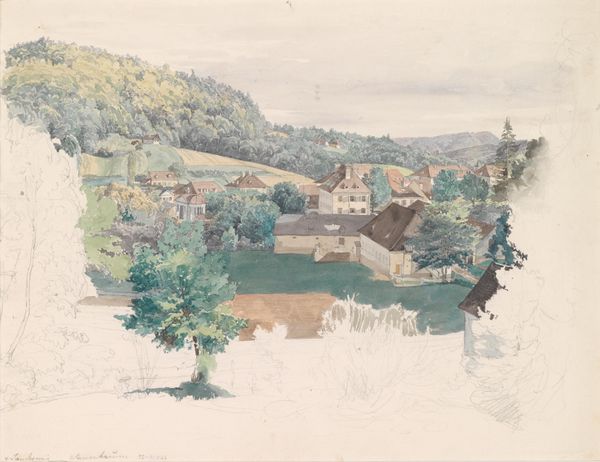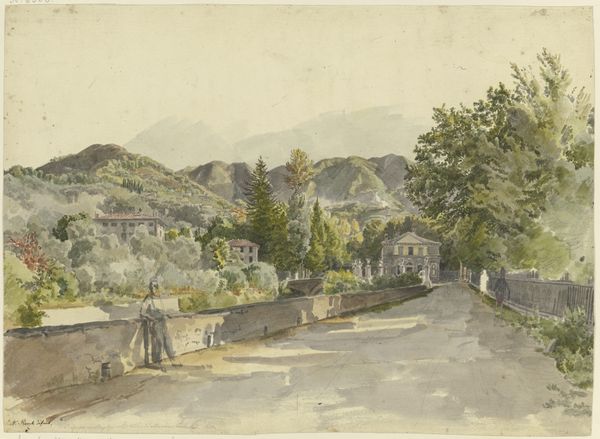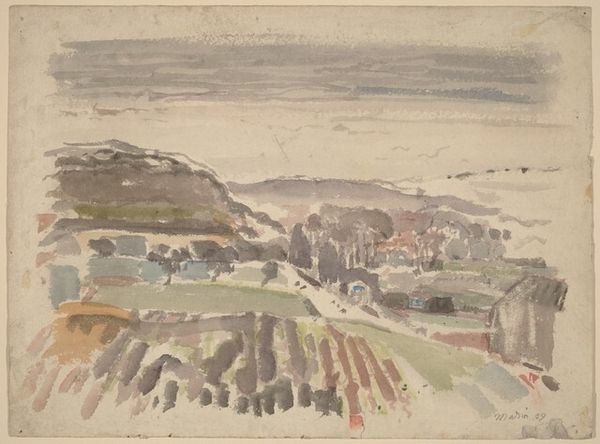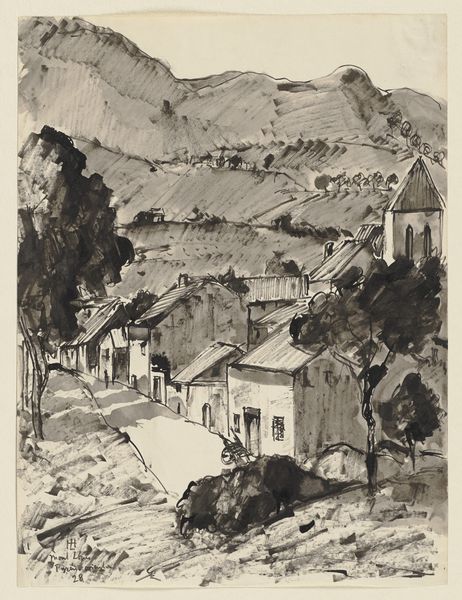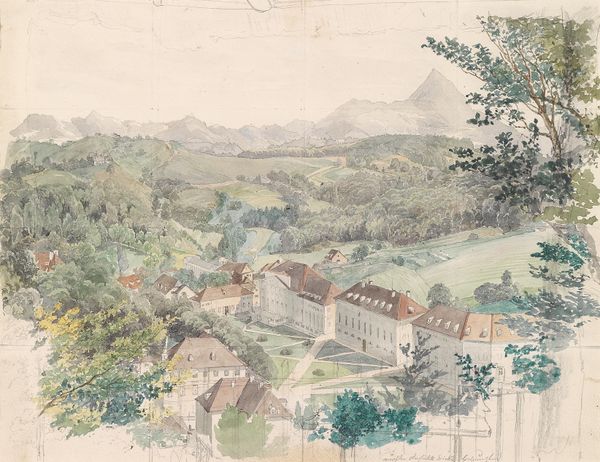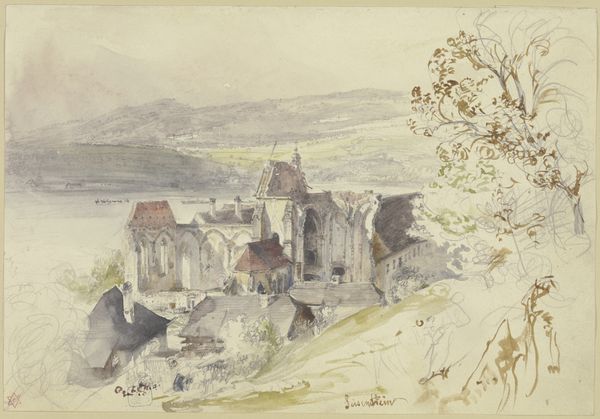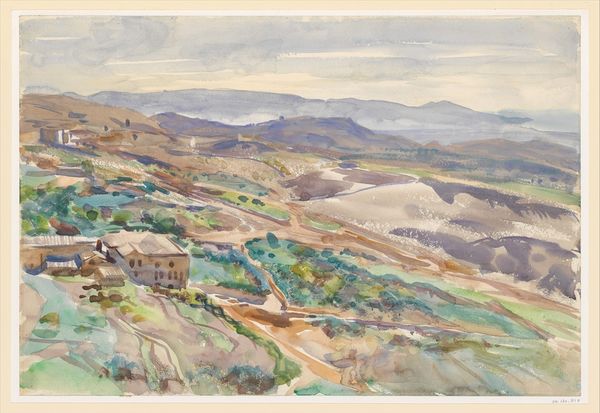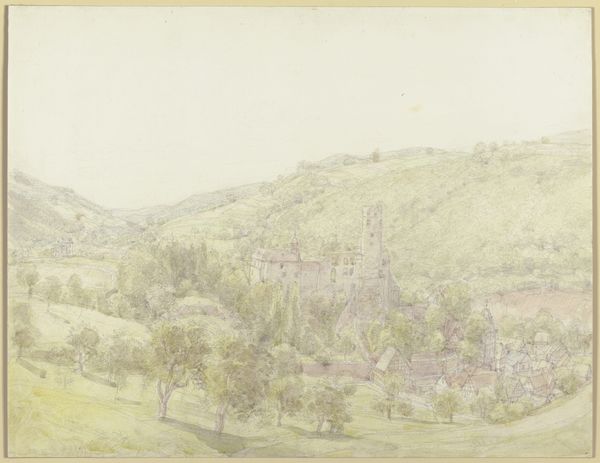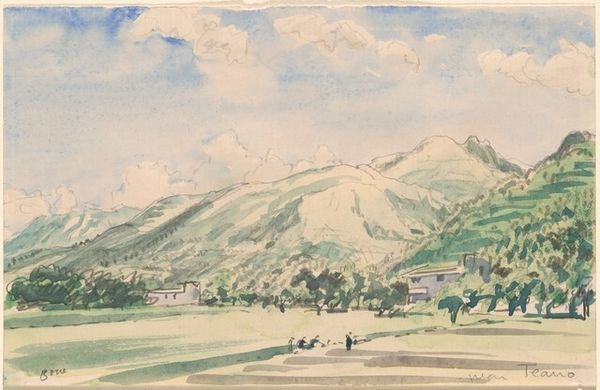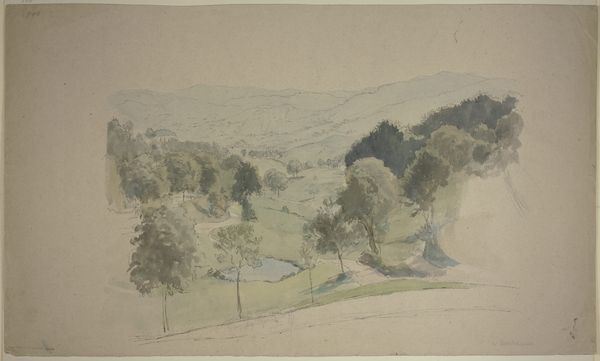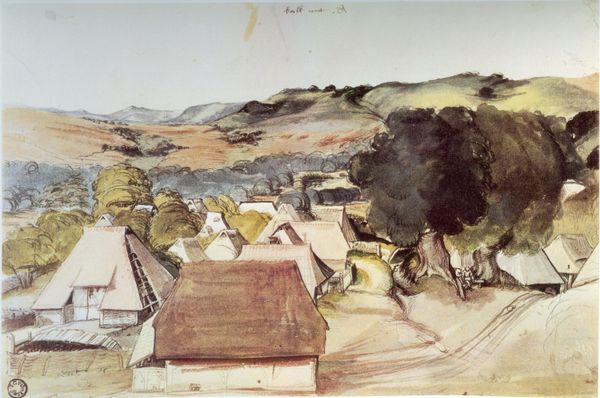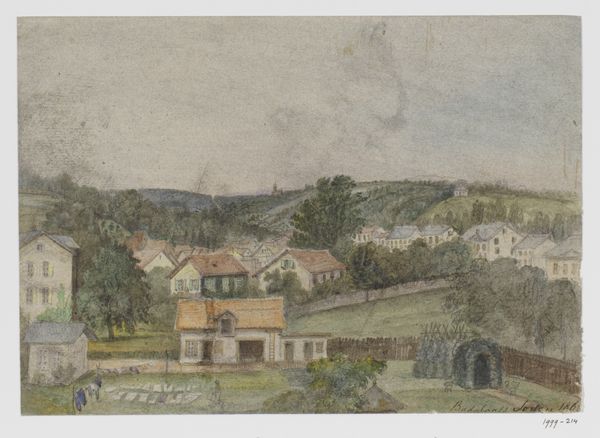
plein-air, watercolor
#
plein-air
#
landscape
#
watercolor
#
coloured pencil
#
watercolour illustration
#
mixed medium
#
realism
Dimensions: 33 x 25 cm
Copyright: Public domain
Editor: Here we have Johann Nepomuk Passini’s 1848 watercolor, "Im Tal Von Bad Rohitsch-Sauerbrunn," a tranquil scene painted en plein-air. It feels very serene, with the soft colours and the way the buildings nestle into the landscape. What do you see in this piece? Curator: The formal elements dictate my interpretation. Observe how Passini articulates space, using a layered composition, where the interplay of light and shadow across the scene generates depth. Consider also how the structure, from foreground to the distant hill, is a careful orchestration of shapes and lines. Editor: It's interesting how you point out the layering. I hadn't consciously noticed how carefully the different planes were constructed. But what about the mood of the artwork? Doesn’t that contribute to its overall meaning? Curator: Mood is secondary. The artist manipulates medium—the fluidity of watercolor—to achieve texture. Notice how controlled washes contrast with more vigorous brushstrokes. It's not merely a depiction; it's a study of the very nature of painting. What function, in your view, do the colours serve here? Editor: Well, the muted tones seem to create a sense of unity. They also contribute to the calm, almost melancholic, atmosphere. It's all very subtle, nothing is jarring. Curator: Precisely! And it is this subtlety, born from considered compositional decisions, which yields a visually cohesive and thus formally 'successful' work. Editor: I see what you mean. By focusing on the composition and use of the medium, you gain a deeper understanding of the artist's intentions and achievements. I appreciate your perspective! Curator: And I trust my perspective may have opened avenues in which to hone your own analytical reading of artworks.
Comments
No comments
Be the first to comment and join the conversation on the ultimate creative platform.
